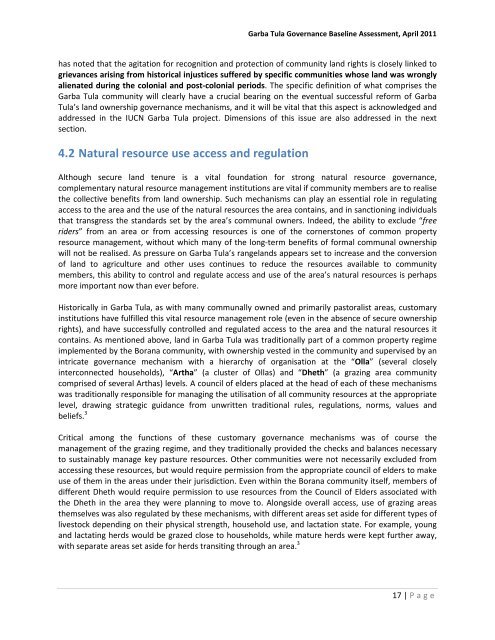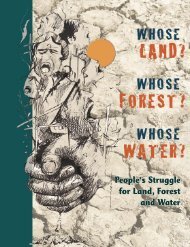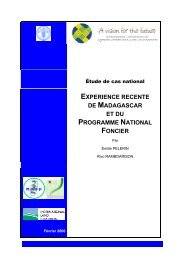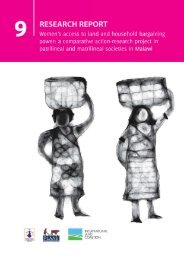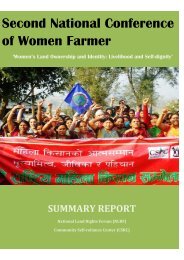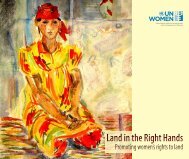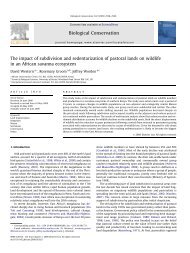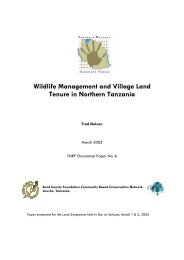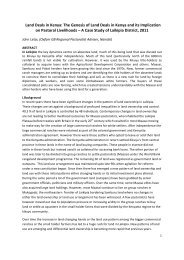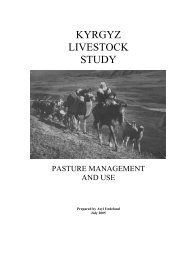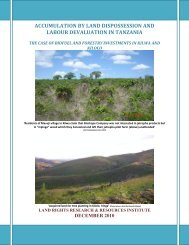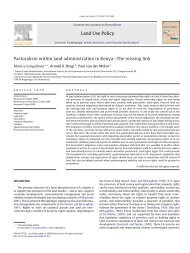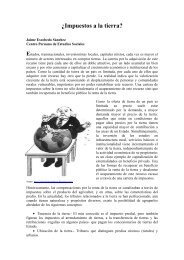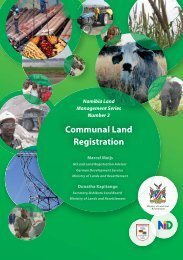Garba Tula Governance Assessment Final Report ... - Land Portal
Garba Tula Governance Assessment Final Report ... - Land Portal
Garba Tula Governance Assessment Final Report ... - Land Portal
You also want an ePaper? Increase the reach of your titles
YUMPU automatically turns print PDFs into web optimized ePapers that Google loves.
<strong>Garba</strong> <strong>Tula</strong> <strong>Governance</strong> Baseline <strong>Assessment</strong>, April 2011<br />
has noted that the agitation for recognition and protection of community land rights is closely linked to<br />
grievances arising from historical injustices suffered by specific communities whose land was wrongly<br />
alienated during the colonial and post-colonial periods. The specific definition of what comprises the<br />
<strong>Garba</strong> <strong>Tula</strong> community will clearly have a crucial bearing on the eventual successful reform of <strong>Garba</strong><br />
<strong>Tula</strong>’s land ownership governance mechanisms, and it will be vital that this aspect is acknowledged and<br />
addressed in the IUCN <strong>Garba</strong> <strong>Tula</strong> project. Dimensions of this issue are also addressed in the next<br />
section.<br />
4.2 Natural resource use access and regulation<br />
Although secure land tenure is a vital foundation for strong natural resource governance,<br />
complementary natural resource management institutions are vital if community members are to realise<br />
the collective benefits from land ownership. Such mechanisms can play an essential role in regulating<br />
access to the area and the use of the natural resources the area contains, and in sanctioning individuals<br />
that transgress the standards set by the area’s communal owners. Indeed, the ability to exclude “free<br />
riders” from an area or from accessing resources is one of the cornerstones of common property<br />
resource management, without which many of the long-term benefits of formal communal ownership<br />
will not be realised. As pressure on <strong>Garba</strong> <strong>Tula</strong>’s rangelands appears set to increase and the conversion<br />
of land to agriculture and other uses continues to reduce the resources available to community<br />
members, this ability to control and regulate access and use of the area’s natural resources is perhaps<br />
more important now than ever before.<br />
Historically in <strong>Garba</strong> <strong>Tula</strong>, as with many communally owned and primarily pastoralist areas, customary<br />
institutions have fulfilled this vital resource management role (even in the absence of secure ownership<br />
rights), and have successfully controlled and regulated access to the area and the natural resources it<br />
contains. As mentioned above, land in <strong>Garba</strong> <strong>Tula</strong> was traditionally part of a common property regime<br />
implemented by the Borana community, with ownership vested in the community and supervised by an<br />
intricate governance mechanism with a hierarchy of organisation at the “Olla” (several closely<br />
interconnected households), “Artha” (a cluster of Ollas) and “Dheth” (a grazing area community<br />
comprised of several Arthas) levels. A council of elders placed at the head of each of these mechanisms<br />
was traditionally responsible for managing the utilisation of all community resources at the appropriate<br />
level, drawing strategic guidance from unwritten traditional rules, regulations, norms, values and<br />
beliefs. 3<br />
Critical among the functions of these customary governance mechanisms was of course the<br />
management of the grazing regime, and they traditionally provided the checks and balances necessary<br />
to sustainably manage key pasture resources. Other communities were not necessarily excluded from<br />
accessing these resources, but would require permission from the appropriate council of elders to make<br />
use of them in the areas under their jurisdiction. Even within the Borana community itself, members of<br />
different Dheth would require permission to use resources from the Council of Elders associated with<br />
the Dheth in the area they were planning to move to. Alongside overall access, use of grazing areas<br />
themselves was also regulated by these mechanisms, with different areas set aside for different types of<br />
livestock depending on their physical strength, household use, and lactation state. For example, young<br />
and lactating herds would be grazed close to households, while mature herds were kept further away,<br />
with separate areas set aside for herds transiting through an area. 3<br />
17 | P a g e


